Startup Products (9/6/20)
Hey Friends,
It’s the first-ever September edition of Sunday School. Welcome!
This week we’re diving straight into the content. This week I’m trimming the fat and minimizing some of the links in favor of more in-depth thoughts on a few of the subjects.
Let’s get to it.

Homeroom
I’ve been traveling this weekend and am in Northern Michigan for a wedding and a few days of vacation. Because of this, you all get off the hook for homeroom this week.
I’m working on two new essays at the moment that I’ll hope to have done in the coming weeks:
A deep dive on another topic in higher education
A remix of one of my favorite essays by Morgan Housel
I’m particularly excited about that 2nd one as it has some creative elements to it that I’ve never used before.
In addition to writing, I’ve been spending time growing Writer’s Bloc with the two other co-founders. We recently hosted our largest group discussion with community member, trial lawyer, and performative speaking coach Robbie Crabtree. Robbie shared his expertise and a public speaker and lawyer on how to craft engaging stories for your writing. We had about 15 community members join for the webinar.
Startup Product Lab
I recently read an essay by Dan Shipper that left an impact on my thinking around products.
Usually, when we think about a startup entering the market, we assume that if they bring a more valuable, better product, that they’ll overtake the larger incumbents and continue to grow market share. It does stand to reason that this would be the case. In general, a better product wins, right?
Not in the case of startups. Consider this quote from Shipper:
“If a startup simply makes a product that’s simply better than a big company, the big company will either copy the product and kill the startup, or buy the startup before it gets too big to be threatening.
Being better isn’t the way to win.
The reason for this is simple: big companies are run by smart people. Business is a long game, played over many iterations — and if something looks like a good idea to an incumbent they’ll be able to react accordingly.”
This also makes a ton of sense. It’s why we see giants buying up upstart competitors, like when Facebook bought Instagram 2012. Some startups want a fancy moderate-sized exit, so it’s not all bad for them.
But the most fascinating thought behind this is what it means for how startups have to think if they’re playing the long game.
If startups want to achieve true market disruption, they need to start with something that seems like a bad idea. It has to be something that is brand spanking new. Something that many people might not feel ready for yet.
When you boil down a startup, what you really have is a group of people doing “extreme problem solving.” They’re working on a radical solution to a problem they’ve identified in the market. To achieve this, they need to be far ahead of the curve, and this means there has to be an element of “that won’t work” in order for it to actually work.
Herpetology
I recently learned about the phrase “it’s turtles all the way down,” and you should learn about it too.
It’s turtles all the way down?
This image and the story within explains it better than my words ever would:
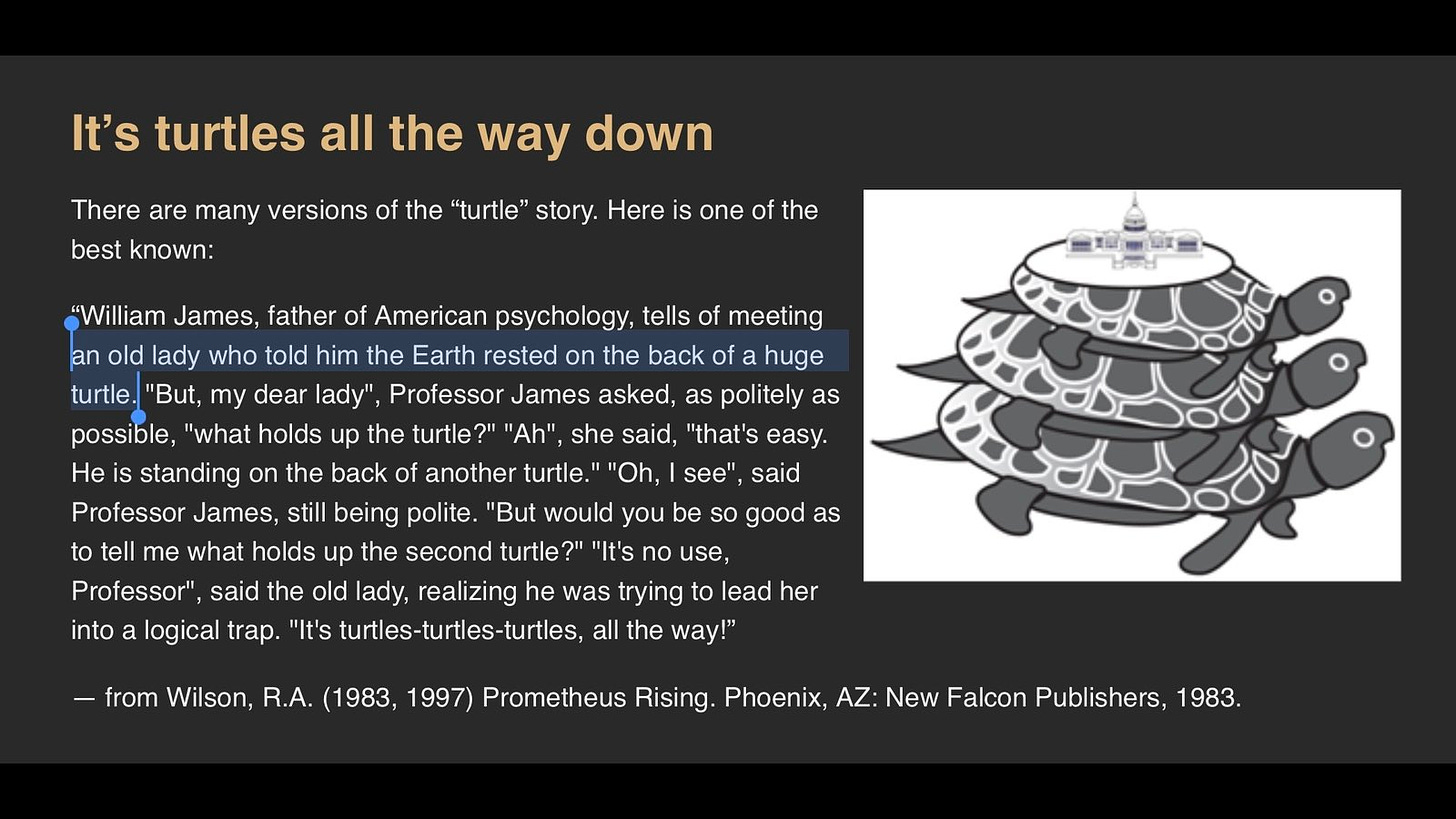
“It’s turtles all the way down” is just a fun way to describe any situation of infinite regress. But all this talk about the Earth resting on the back of a turtle has me thinking:
If things like atomic particles exist and are in the scope of what we know to be true, doesn’t it also seem possible that it could go the other way and the Earth could be something that’s an atomic-sized particle to someone else?
I can’t think about that anymore…🤯
History of Transportation
While reading about the Gold Rush in the mid-1800s this week I came across some information that completely surprised me.
I had always (maybe naively) assumed that everyone migrating to take part in the Gold Rush just caravaned Oregon Trail style across the country. Not true. Here’s an excerpt from journaled documents about a group traveling from Boston to San Francisco in 1850:
“[On] July 4, 1850, he sailed from New York for California in the steamer "Tennessee," in company with his brother-in-law, David Gregg, and John E. and Aaron F. Loring, whose sister he later married. In all there were about one hundred passengers bound for California. The passage of eight days to Chagres, Central America, was rough. From there to Cruces it was a trip of three days up the river in a "dugout" or log boat. Then a day and a half on foot brought them to Panama [City]. Here they took the steamer "Cherokee," and fifteen days later landed in San Francisco.”
This is an insane journey. Two steamships, a log boat, and a day of walking in Panama. Not sure if this is something I want to be a part of or not…
Art Class
Link: Stoxart
Some of the most creative art I’ve seen for a while. Take a look at this digital art created to mirror the stock charts of different companies, and visit the link just above for more of them.
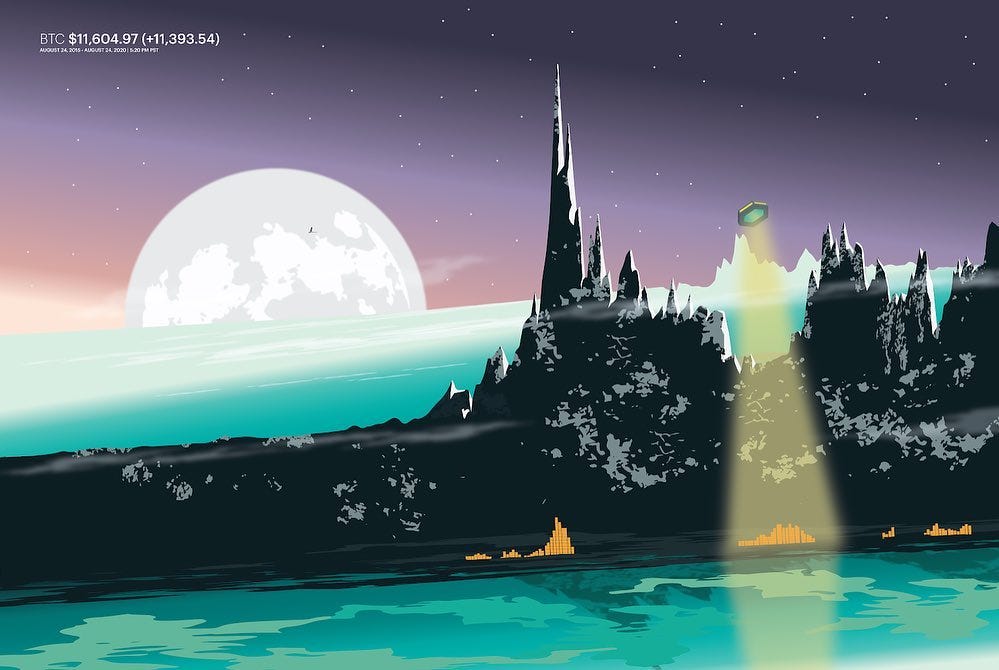
Bitcoin (Above)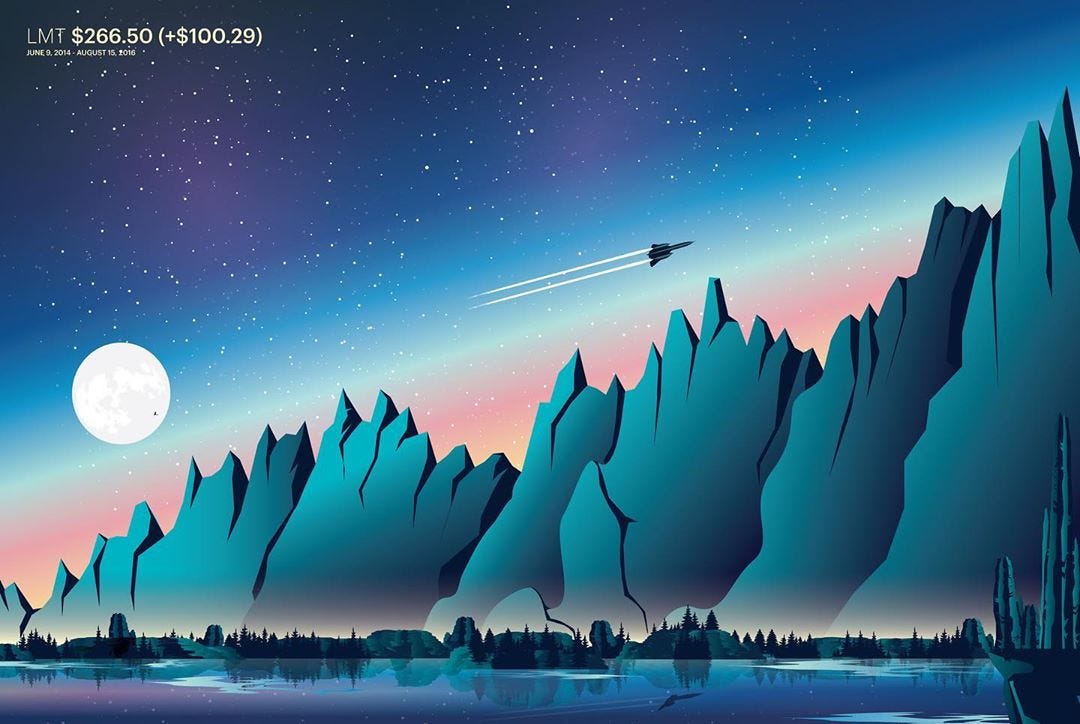
Lockheed Martin (Above)
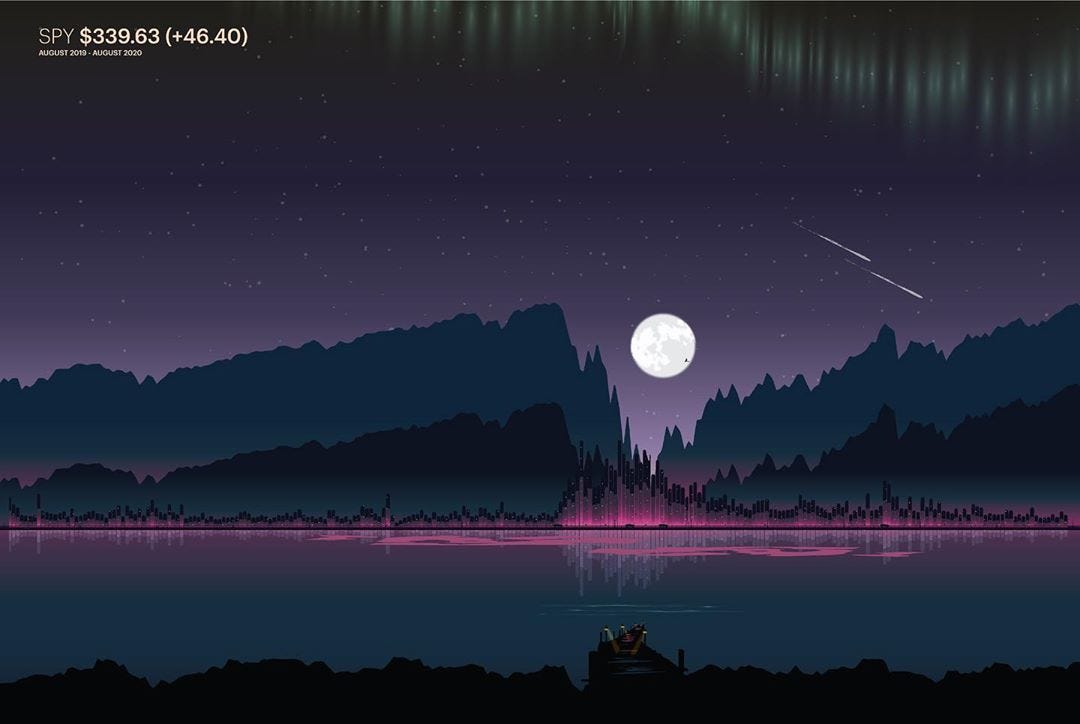
S&P 500 (Above)Photo of the Week
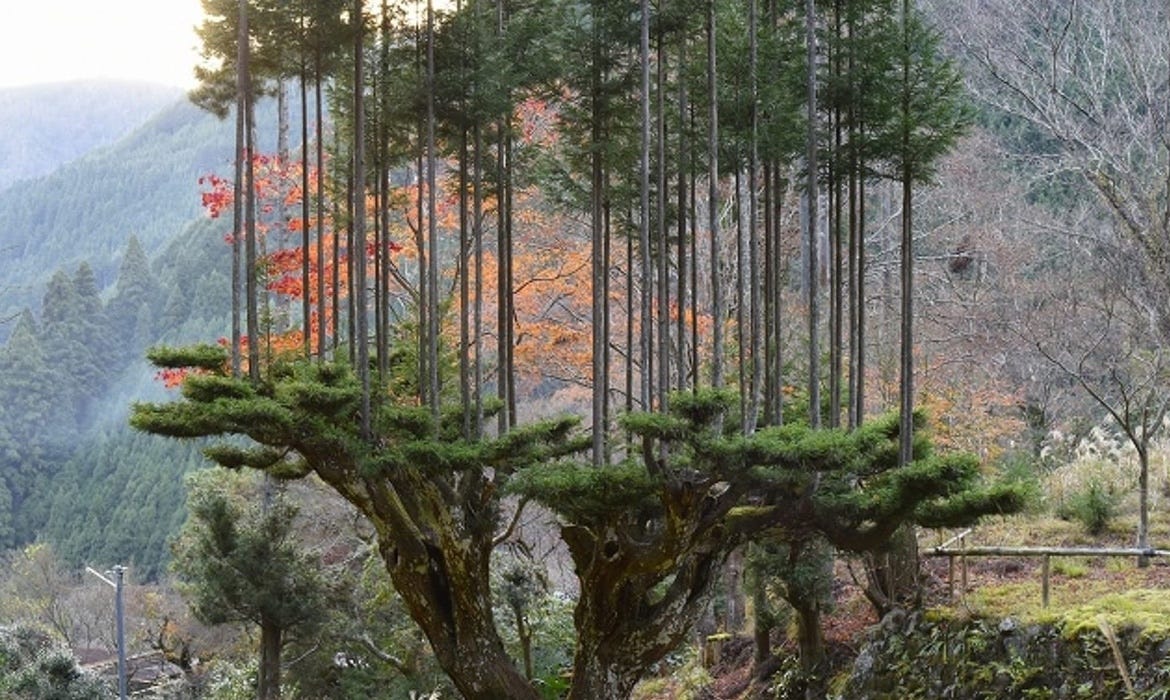
This is a cool tree growing technique in Japan called Daisugi. It allows the harvesting of lumber without taking up a ton of space. While I’m sure it’s convenient and functional, it also looks really awesome.
Quote of the Week
"You could try to pound your head against the wall and think of original ideas or you can cheat by reading them in books.” - Patrick Collison (co-founder of Stripe)
That’s all for this week, thanks for attending!
See you next week,
-Ryan Mulholland


